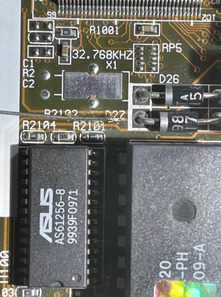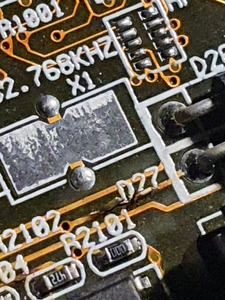Finally had the time to do it and guess who's back, alive and kicking? Good ol' P3B-F!
TheNoOne wrote on 2022-03-01, 05:48:Just solder a small bridge with e.g. a resistor leg over the broken trace as shown here: download/file.php?id=131578&mode=view
Man, thank you SO much. I'm still not over the fact you casually passed by with a couple of posts on this board and shown a picture of the exact issue my board was having, 1 day after I posted. As someone else mentioned: spooky 😁
I can confirm the resistor is not hot anymore, and the LED doesn't light up as soon as PSU is turned on neither.
gdjacobs wrote on 2022-03-03, 01:11:I probably wouldn't use a via as they're usually not as robust for soldering on. I think the two pin jumper pad by the corner mounting hole would work. 24 ga wire looks to be about right. If so, you can run a jumper wire along the board edge and tape it down.
Good call, that was easy enough and I did exactly that!
For the record and anybody in the future getting to this thread with the same issue: I have been running this board for months at FSB133, with AGP cards on the bus running at 89MHz. I absolutely can't say for sure (by lack of electronic knowledge) this is the reason of the burnt trace, but seeing two cards with such an identical problem this looks like textbook common mode failure, and running things slightly out of specs is as good an explanation as any.
Thanks to anyone else that chimed in along the way, much appreciated!



